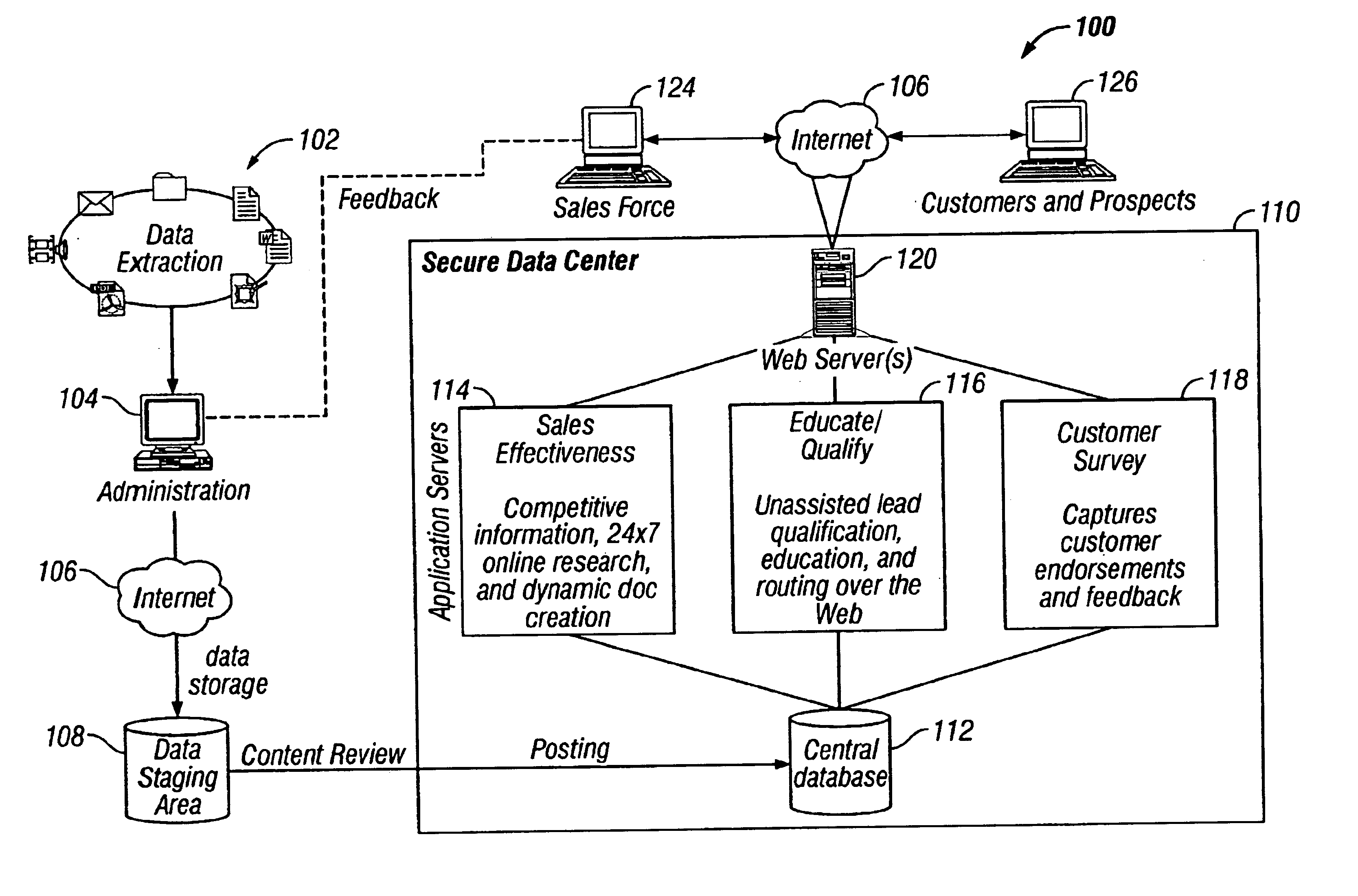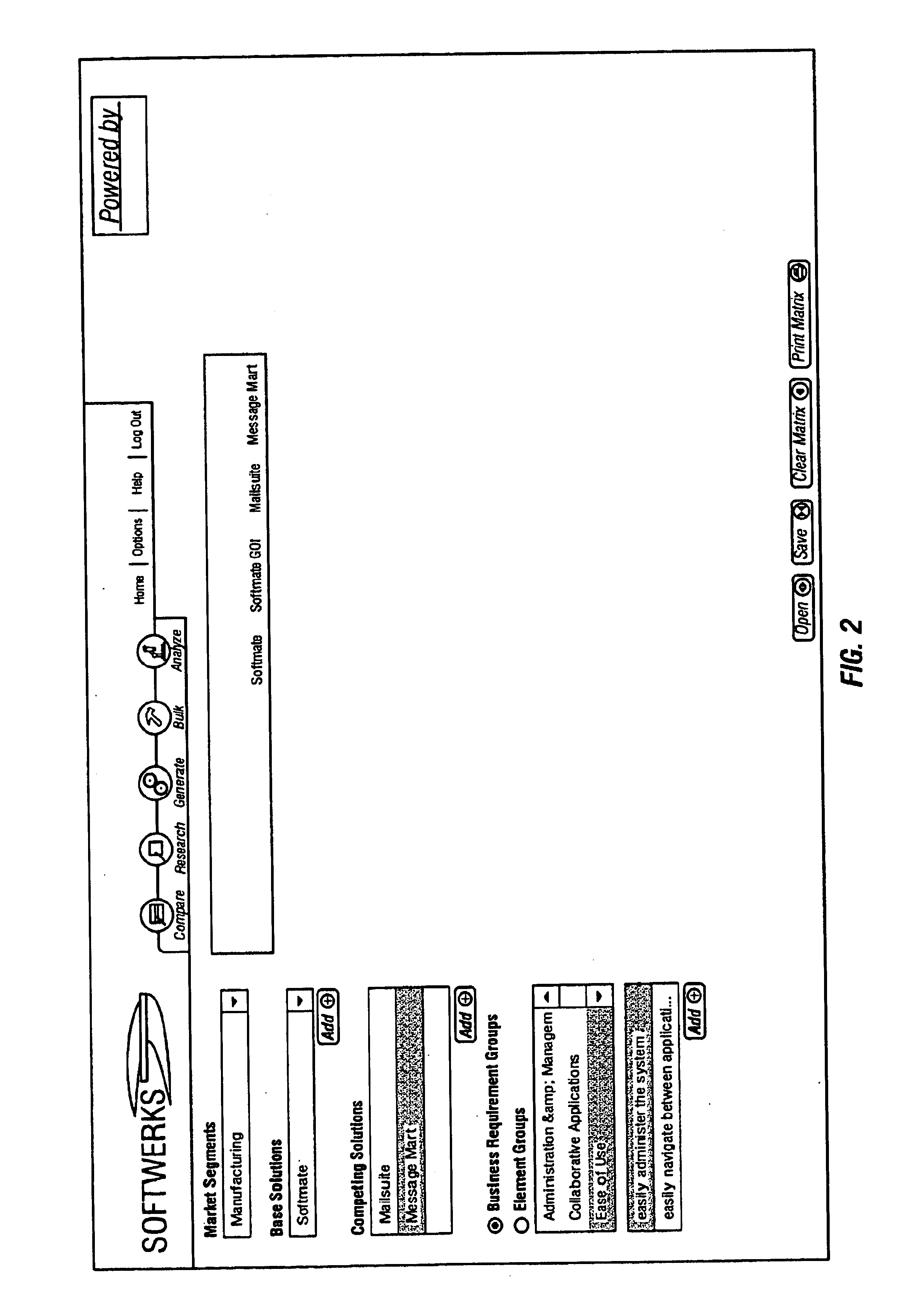Method and system for managing and providing sales data using world wide web
a technology of world wide web and sales data, applied in the field of software products, can solve the problems of inflexible salesperson functionality, limited tes products, and inability to provide help,
- Summary
- Abstract
- Description
- Claims
- Application Information
AI Technical Summary
Benefits of technology
Problems solved by technology
Method used
Image
Examples
Embodiment Construction
The present invention includes a method and apparatus for collecting storing and disseminating sales information. In one embodiment, several software application facilitate data collection from a variety of users within a company through a World Wide Web site. The data is classified and stored in a central database and may be accessed in many different ways by users to assist the users in selling products.
In one embodiment, the software applications include a sales effectiveness application, a website prospect education and qualification application, a customer survey application, and an authoring application. The sales effectiveness application provides access to competitive information, research, and dynamic document creation. In one embodiment, the sales effectiveness application includes various modules. For example, a compare module generates comparisons of products, such as competitive “scorecards” in the form of matrices. A generate module generates context-aware sales docume...
PUM
 Login to View More
Login to View More Abstract
Description
Claims
Application Information
 Login to View More
Login to View More - R&D
- Intellectual Property
- Life Sciences
- Materials
- Tech Scout
- Unparalleled Data Quality
- Higher Quality Content
- 60% Fewer Hallucinations
Browse by: Latest US Patents, China's latest patents, Technical Efficacy Thesaurus, Application Domain, Technology Topic, Popular Technical Reports.
© 2025 PatSnap. All rights reserved.Legal|Privacy policy|Modern Slavery Act Transparency Statement|Sitemap|About US| Contact US: help@patsnap.com



